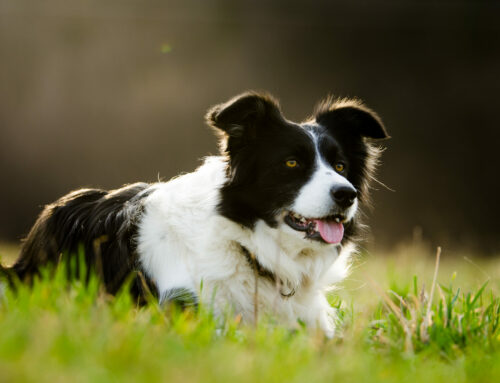A lot of dogs don’t like having their feet looked at – which unfortunately means they tend to wriggle and squirm just when we’re trying to clip their toenails! However, there are some techniques you can use to make it a bit easier…
First, why don’t they like it?
There are two possible reasons – most often, it’s because they’ve had a bad experience some time before, that’s made them very protective of their feet and claws. Bad experiences usually means that at some point, when clipping the claws, someone has caught the quick (the living part inside the claw). Sadly, this does happen occasionally – it doesn’t mean the person doing it is incompetent, it’s an unfortunate but common complication. In dogs with pale claws, it’s easy to see the quick, but in dogs with dark nails, there’s no way to know how far down the quick extends.
The other reason is that they have tender or ticklish feet. This may just be them, but is often because of an underlying disease process – allergies, contact dermatitis, or pododermatitis, for example, all make the feet very tender. If your dog has red or sore-looking skin, especially between the pads or toes; or if there is staining of the fur (other than with mud, obviously), it’s always worth bringing them in for a check-up. A lot of skin diseases are first noticed when they affect the feet, and so this can be a chance to get on top of the problem before it spreads.
OK, so what do I do?
If they’ve had something nasty happen before, it’s important to try and “dilute” that memory with lots and lots of happier, or at least less painful, ones. A good way to start is by examining the feet every day for 3-4 weeks (at least) – sit your dog down, as if you were going to trim their claws, but don’t actually do anything but look at them. After each session, make a big fuss of them and possibly offer a treat. After a few weeks, you can start to feel their toes, and (gently!) squeeze their toes and nails, but again without clipping. Then, get the clippers out but don’t actually clip – just put them on the nails. Again, reward them for good behaviour, don’t try to punish them if they get nervous or frightened. Finally, you’ll be ready to actually clip just a tiny bit off the end of each claw, and gradually build up to normal clipping.
If they have tender feet, get them checked out for any underlying disease, but if they’re healthy and just ticklish, then sadly there isn’t a lot you can do about it! Some people recommend standing in cold water to reduce the sensitivity of the skin before clipping, but that can risk damaging the skin if done too often. Probably the best answer is to bring them in for us to do – we’re used to dealing with ticklish dogs and our nurses are experts at holding dogs still without upsetting them!
Is there anything I can do to reduce the chance that I’ll catch the quick?
Yes! If your dog has pale claws, look at each one before clipping, and check that the quick (which is visible as a dark or pink line inside the nail) isn’t going to be caught. If your dog has dark nails, aim to cut them off level with the pads if they were standing. Also, squeeze gently before closing the clippers – if you’re over the quick, he is likely to flinch, and then you can move down to take a bit less off. This isn’t 100% reliable, but it’s better than nothing.
If in any doubt about claw clipping, bring your dog down and we can show you the best way to do it.



